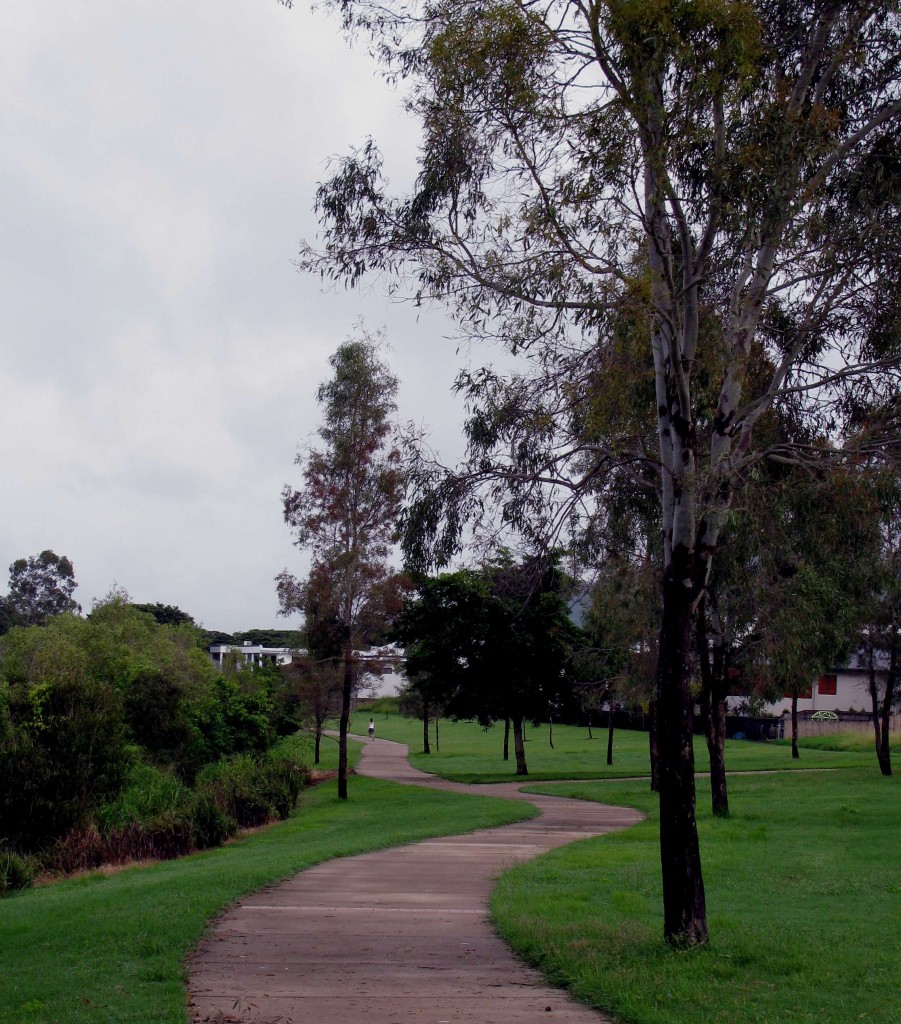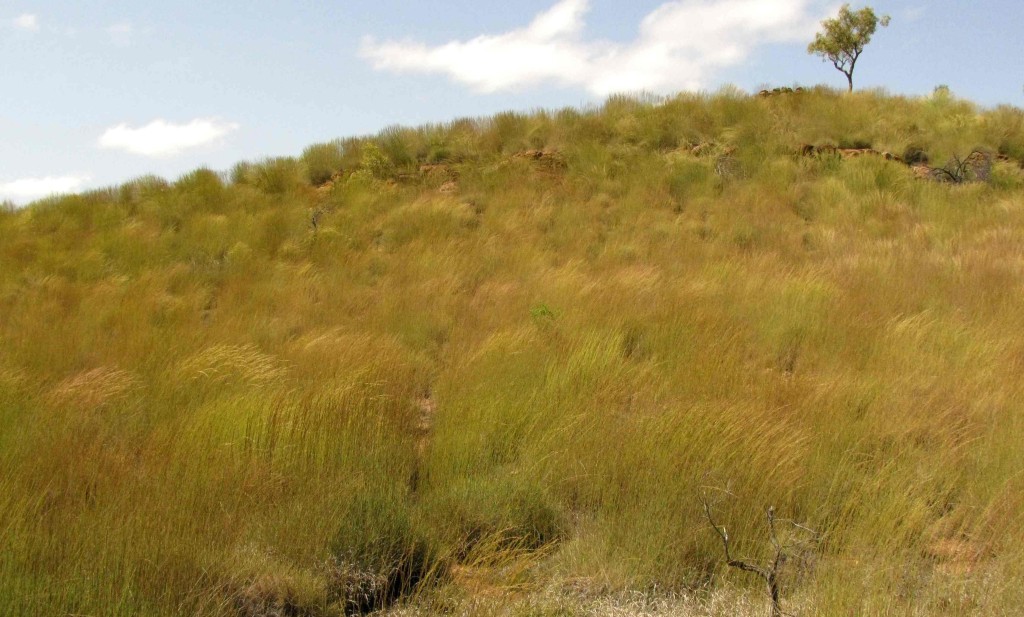
Ross River Parkway in Idalia, Townsville (© Magi Nams)
This morning had the feeling of a late summer morning in Nova Scotia, with crickets strumming their fore-wing violins slowly, and the smell of damp coolness in the air. Grey clouds washed with pink hung over western hills, as though some giant galah parrot had spread a wing over the earth. The days are noticeably shorter now, the sun rising a half hour later than when we arrived in Queensland at the end of December. Leaving the house at 6 a.m., I cycled for 45 minutes, across Bowen Road and then into the newer, upscale suburb of Idalia. Although the trail followed the river and twice formed enticing tunnels through thick vegetation, it lacked the massive shade trees and spacious beauty of the parkway in the suburbs of Mundingburra and Aitkenvale, instead seeming squashed between river and houses. It ended too soon, so I retraced my path and then sped past the golf course and into Bicentennial Park, seeking nothing in particular, just soaking up what the morning offered.

Homes next to Parkway in Idalia (© Magi Nams)
Yesterday evening, I listened to an ABC documentary about the ecology of the Simpson Desert.1 A vast region of red sand dunes, the desert spans 200,000 square kilometres at the intersection of three states – South Australia, Queensland, and the Northern Territory – and is part of the extensive desert and semi-desert country that covers the centre of this continent and comprises 70% of Australia’s geographic area.1 The desert experiences sandstorms, flash floods, and bushfires, as well as a wide range of temperatures that plunge as low as below freezing and as high as 50°C.1
The vegetation of the Simpson Desert is dominated by hummocks of spiny spinifex grasses, various eucalypts, and gidgee trees, a kind of acacia.1 Termites feed on the spinifex grass, cutting it and transporting it underground for storage. The termites, in turn, are eaten by small mammals and a number of lizards that specialize in preying upon termites and have diets consisting of up to 99% termites.1 One of these lizards is a skink so modified for swimming beneath the surface of the desert sand, it resembles a baby snake except for its thin, greatly reduced hind legs.1 The hummocks of spinifex grass offer food, shelter, and hunting opportunities, creating one of the richest populations of arid-zone reptiles in the world, at 54 species.1 The desert is also home to 17 species of small mammals and, surprisingly, 4 species of frogs.1

Spnifex Grassland near Alice Springs, Northern Territory (© Vilis Nams)
In 2001-2002, a huge wildfire burned in the Simpson Desert for 5 months and charred 2 million hectares of spinifex grassland.1 Although spinifex grasses contain resins and, like eucalypts, are adapted for fire, the plants were essentially reduced to ashes.1Termite populations, which had stored enough food underground for two years, plummeted in the years following the fire and essentially disappeared.1 With the termites gone, the specialist lizards disappeared, too.1 As well, foxes and feral cats moved in after the wildfire destroyed the ground vegetation and had a field day cleaning up surviving mammals and reptiles.1 The desert is recovering slowly – spinifex re-establishing as small, green clumps, the termites finally reappearing – but three of its native mammals – the long-haired rat, short-tailed mouse, and desert mouse – are now considered regionally extinct.1
Intrigued by the documentary and by the fact that part of the Simpson Desert lies within Queensland, I went online after I returned from my bike ride and was captivated by photographs of red sand dunes and expansive spinifex grasslands. This progressed to reading about 4WD tracks that cross the desert, which instantly filled me with the desire to pack the Sportage with desert travel equipment, spare fuel, food, and water for days of exploring that red sand desert. On our previous trip to Australia, Vilis and I and our sons spent two weeks investigating New South Wales’ national parks from Blue Mountains to Dorrigo, but never made it to the outback. Maybe we’ll make it this time.
Reference:
1. ABC Radio National The Science Show. Ecology of the Simpson Desert. February 20, 2010. © 2010 ABC. Accessed 23-Feb-2010. http://www.abc.net.au/rn/scienceshow/stories/2010/2814565.htm


